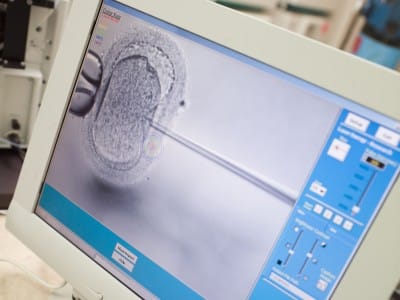While two may seem better than one, especially when it comes to expensive fertility treatments, there can be severe consequences when selecting a multiple birth in lieu of a singleton. Experts are speaking out on this issue and reassuring parents that the success rate for singleton births can be just as high as twin or higher multiple birth rates. The only difference is that there are lower risks to mother, child(ren) and society as a whole.
Dr. Jon Barrett is one of those experts speaking out. He says that he sees babies produced by fertility treatments that are small enough to fit in the palm of one hand each and every day. Some of these infants are born as early as 24 to 26 weeks gestation. There have been some infants born at 22 and 23 weeks who have, by some miracle, managed to survive after birth.
But survival isn’t easy for these infants. Most of them need to be intubated. They need help breathing, or they need help with circulation, or they need several lines of fluids or operations to help keep them alive. They spend months in intensive care, fighting to survive. They are at a higher risk for brain bleeds, infections and lung damage – all of which can be fatal.
Moreover, twins and multiples are at a higher risk for life-long conditions, like cerebral palsy, blindness or deafness. One figure shows that twins are four times more likely to suffer from cerebral palsy than a singleton. These infants may need parental care for the remainder of their lives because they were born too soon. What’s worse is that twins are six times more likely to die during the first year of life than singletons. For triplets, this risk is increased 12-fold.
Canada has one of the highest rates of multiple IVF births in the world. Out of the 28 private clinics located in the country, there were 1,274 multiple pregnancies in the year 2010: 1,193 twins, 76 triplets and five quads. The IVF Medical Directors of Canada hope to decrease these numbers exponentially by offering support to clinics that are trying to reduce their multiple rates by implanting only one embryo at a time.
Unfortunately, there are some barriers in making these efforts a success. One barrier in particular is something that the clinics have no real control of, or at least they feel they have no control of – patient wishes.
Because most fertility treatments are paid for by patients in Canada, couples want to achieve the highest success rate possible. They truly believe that they can achieve that higher success rate by implanting more embryos. Yet recent discoveries contradict this belief.
Clinics have recently started implanting five day old embryos into patients. At this stage, fertility specialists are better able to tell which embryos are most viable, thereby increasing the success rate of a singleton pregnancy at the five day embryo growth mark to the same success rate as a twin implantation at the three day embryo growth mark. This reduces risk to both mother and baby drastically.
Yet, even after being counseled on the risks and the increased success rate of singleton births, as much as 85 percent of couples are set on having twins.
“Patients will insist that they want more than one. Then you get into the issue, does the patient have the right to have two embryos if the physician thinks that one is right? What do you do?” said Dr. Al Yuzpe, co-founder and co-director of the Genesis Fertility Center in Vancouver. “One of my partners had a patient who was in the office the other day who absolutely refused to even listen to the idea of a single embryo transfer.” He says that the position IVF clinics and physicians are put in by their patients is unfair.
There may be a solution, however, but it would require the help of more than just the clinics. It would require the help of Canada’s health care system. This solution was discovered via a change in Quebec’s health care policy.
In July 2010, Quebec started paying for up to three cycles of IVF, as long as only one embryo was transferred at a time. Since then (less than two years), the multiple pregnancy rates in Quebec have plummeted – from 30 percent in 2009 to only five percent, currently.
This has lead Barrington and other observers to believe that part of the reason that multiple births are so high is the “perverse economical incentives” that drive the IVF industry. Eliminate the cost and couples are quite likely to hop on board, even if it could mean one or two failed attempts. After all, they have nothing to lose at that point.
“If you take away the financial component, like what’s happening in Quebec and many other places in the world where it’s legislated and paid for, then you get multiple pregnancy rates decreasing significantly,” said Barrett. And the incentive applies to the entire country, province, or community, according to Barrett. “It goes into schools, social programs. Divorce is higher in families of multiple pregnancies, family violence is higher – there is a whole societal run off. You can solve the whole problem by funding it.”
Right now, Ontario’s health ministry says that they are considering “various options relating to fertility procedures and clinics,” but the sooner they hop on board, the better it seems. Quebec is already reaping their benefits through their paid for IVF incentive programs because two and three embryos cannot be transferred if the patient wants the treatment to be funded. As a result, there have been “fewer twins in the neonatal intensive care unit. Far fewer babies that were put there as a result of IVF,” according to Barrington.
That fact alone is nothing short of amazing.
Related Articles:







